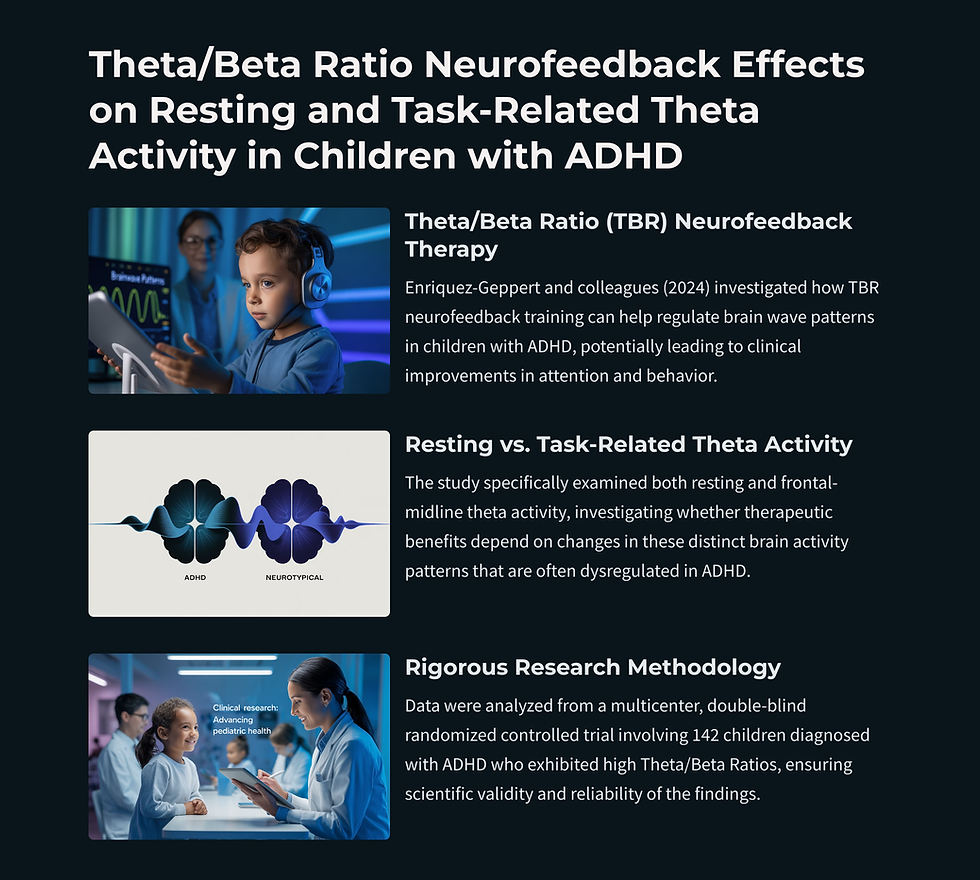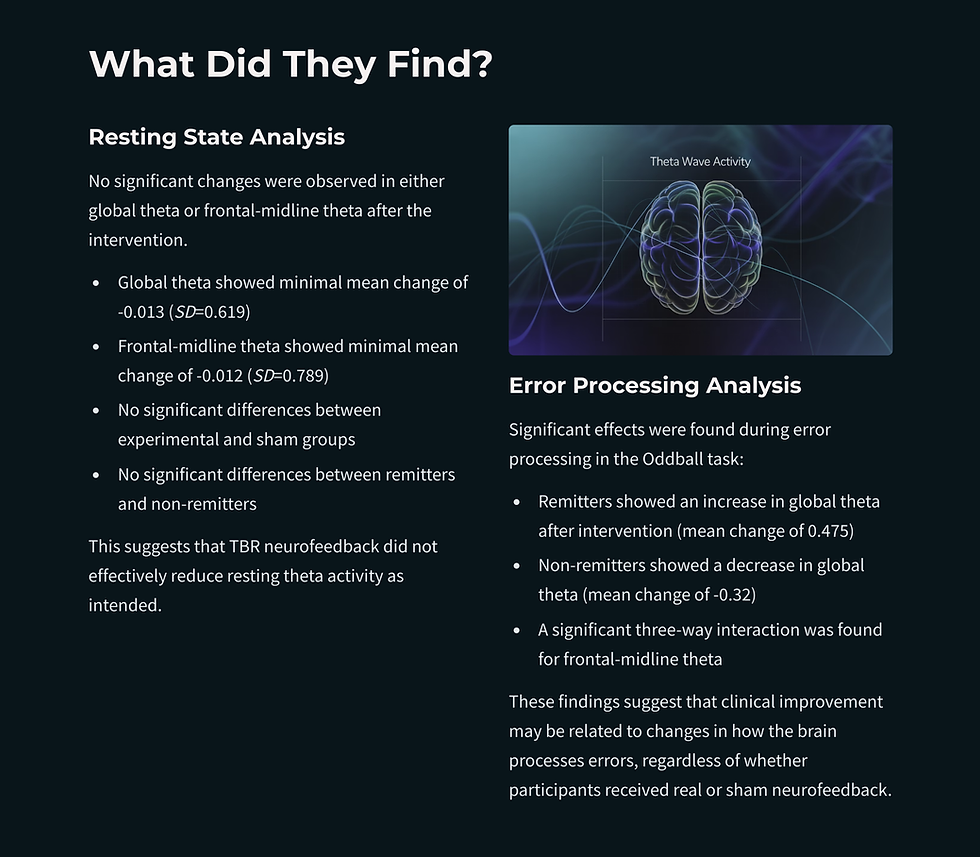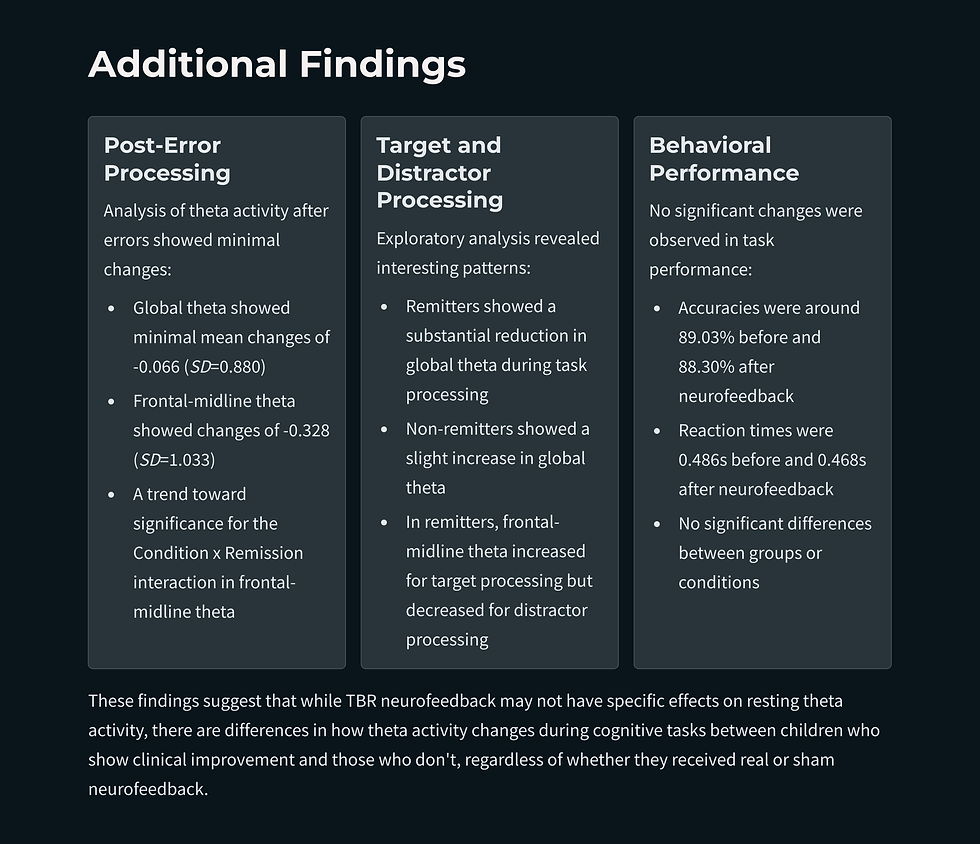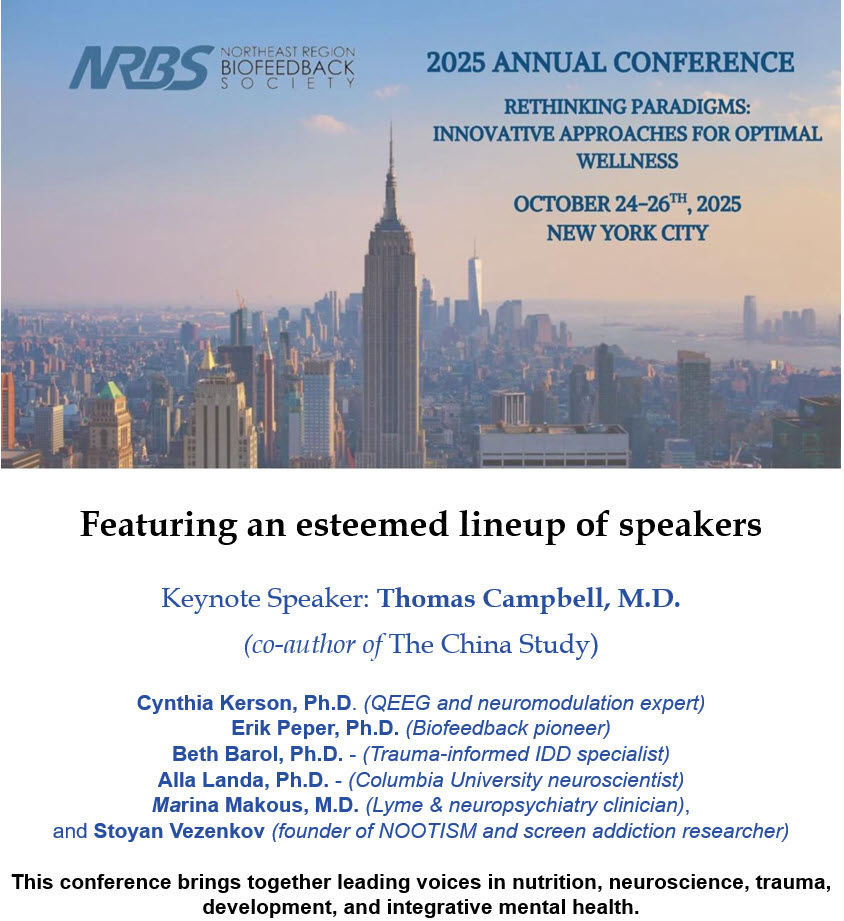5-Min Science: Theta/Beta Ratio Neurofeedback
- Fred Shaffer
- 5 days ago
- 3 min read
Updated: 2 days ago

Theta/Beta Ratio Neurofeedback for Children With ADHD
This post summarizes the Applied Psychophysiology & Biofeedback article, "Theta/beta ratio neurofeedback effects on resting and task-related theta activity in children with ADHD," by Enriquez-Geppert and colleagues (2024).
What Is The Takeaway?

What Is The Science?

How Did They Do It?

What Did They Find?


What's The Impact?

What Were The Study's Limitations?

Glossary
beta activity: fast brainwave activity typically ranging from 13 to 30 Hz, associated with active concentration, alertness, and cognitive engagement.
clinical remitter: a participant who shows a meaningful reduction in adhd symptoms following treatment, as determined by standardized behavioral assessments.
condition × remission interaction: a statistical interaction effect indicating that the relationship between treatment condition and outcome differs depending on whether a participant is a remitter or non-remitter.
decoded neurofeedback: a technique that uses machine learning algorithms to identify specific patterns of brain activity and delivers feedback based on these decoded neural representations, rather than raw EEG signals.
electroencephalography (EEG): a non-invasive method that measures electrical activity of the brain through electrodes placed on the scalp.
error processing: the brain's ability to detect and respond to incorrect responses during a cognitive task, often associated with increased frontal-midline theta activity.
false negative error (Type II error): a statistical error where a true effect is missed, leading to the incorrect conclusion that there is no difference or association.
false positive error (Type I error): a statistical error where a difference is detected when none actually exists, often due to multiple comparisons or poor data quality.
frontal-midline theta (fm-theta): theta activity originating from medial prefrontal regions, particularly during tasks requiring cognitive control, such as error monitoring or conflict resolution.
global theta: an averaged measure of theta power across multiple electrode sites, reflecting general cortical slowing or underactivation.
hybrid EEG-fMRI: a neuroimaging method that combines the temporal resolution of the EEG with the spatial resolution of functional magnetic resonance imaging to localize brain activity with greater precision.
independent component analysis (ICA): a computational method used to separate mixed EEG signals into statistically independent components, often used to isolate neural activity from artifacts like eye blinks or muscle movements.
inverse problem: the challenge in EEG analysis where surface recordings cannot uniquely identify the exact location or source of brain activity due to overlapping electrical signals and volume conduction.
neurofeedback: a form of biofeedback that uses real-time displays of brain activity to teach individuals how to self-regulate specific neural oscillations.
non-remitter: a participant who does not show clinically significant symptom improvement following an intervention.
oddball task: a cognitive task in which participants detect infrequent target stimuli amid frequent standard stimuli, used to elicit event-related brain responses.
operant conditioning: a learning principle in which behavior is modified through reinforcement or punishment; in neurofeedback, rewards are used to shape brainwave activity.
post-error processing: neural activity occurring after an incorrect response, often reflecting the brain's adaptive response to mistakes.
prognostic biomarker: a biological measure that predicts the likely response to a treatment rather than confirming a diagnosis.
resting-state EEG: brain activity recorded when an individual is awake but not engaged in a task, often used to assess baseline neural function.
sham neurofeedback: a control condition in which participants receive feedback from prerecorded or non-contingent EEG data, rather than their real-time brain activity.
source estimation: a technique used in EEG analysis to infer the cortical locations generating observed scalp potentials, helping to localize brain activity.
statistical power: the probability of correctly detecting a true effect in a study, influenced by sample size, effect size, and measurement reliability.
task-related theta: theta activity observed during engagement with a cognitive task, particularly associated with attention and executive functioning.
theta activity: brainwave oscillations in the 4–8 Hz range involved in memory, attention, and emotional regulation; elevated levels are often observed in ADHD.
theta/beta ratio (TBR): a metric calculated by dividing theta power by beta power, used as an index of cortical arousal and attentional regulation in neurofeedback protocols.
volume conduction: the phenomenon by which electrical signals spread across the scalp from their cortical source, complicating efforts to localize brain activity in EEG recordings.
Reference
Enriquez-Geppert, S., Krc, J., van Dijk, H., de Beus, R. J., Arnold, L. E., & Arns, M. (2024). Theta/beta ratio neurofeedback effects on resting and task-related theta Activity in children with ADHD. Appl Psychophysiol Biofeedback (2024). https://doi.org/10.1007/s10484-024-09675-w
About the Author

Fred Shaffer earned his PhD in Psychology from Oklahoma State University. He earned BCIA certifications in Biofeedback and HRV Biofeedback. Fred is an Allen Fellow and Professor of Psychology at Truman State University, where has has taught for 50 years. He is a Biological Psychologist who consults and lectures in heart rate variability biofeedback, Physiological Psychology, and Psychopharmacology. Fred helped to edit Evidence-Based Practice in Biofeedback and Neurofeedback (3rd and 4th eds.) and helped to maintain BCIA's certification programs.
Support Our Friends








Comments